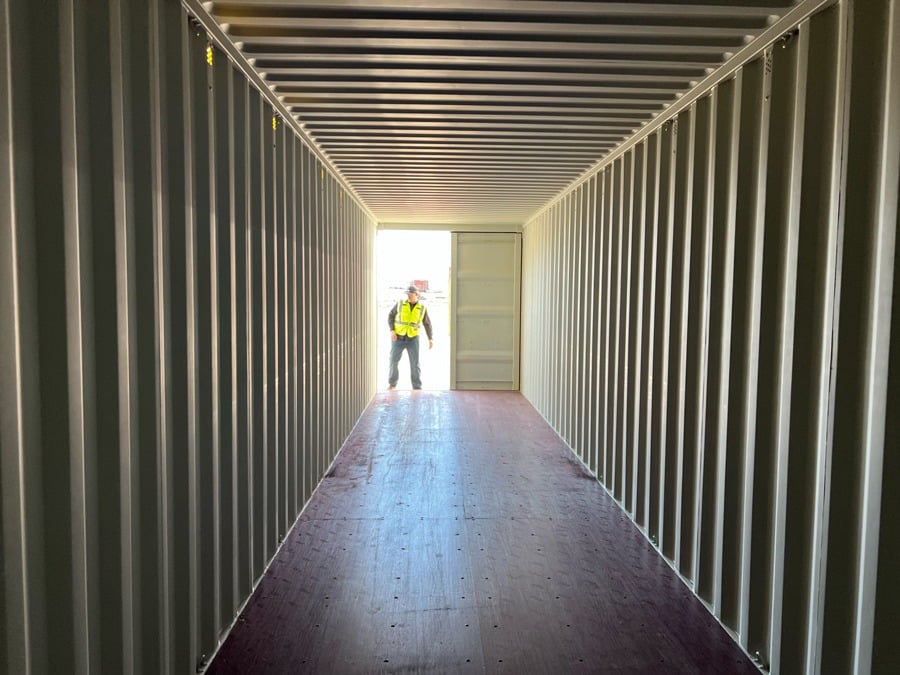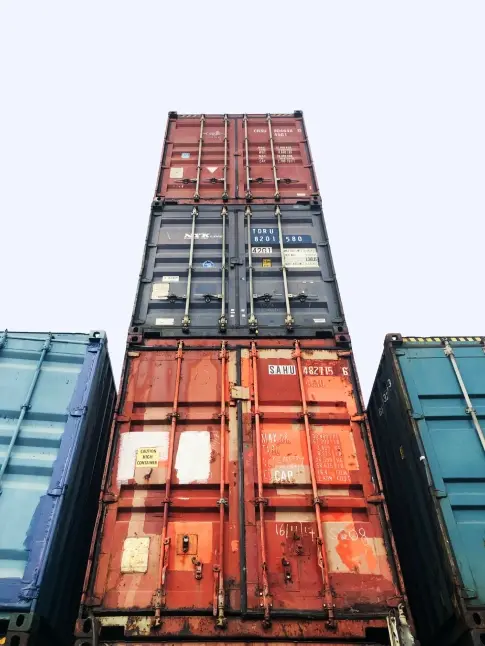The Economy Is Shifting and Soon There Will Be Shipping Containers In The Streets
During the COVID-19 pandemic, a shift from consumer spending on services to spending on goods brought record shipping container volumes to ports in the US & Canada. When people were socially distancing at home, the money they would have spent eating out at restaurants or on travel was now spent on things like new dishwashers and other physical goods, and those additional products needed to be shipped here in cargo containers. As the economy reopens there’s been a dramatic shift towards pre-pandemic shipping volume and a significant uptick in spending on travel and services.
Trying to Outsmart Supply Chain Delays is Causing Shipping Container Inventory to Stack Up…
The reduction in freight demand coupled with the recent Shanghai lockdowns (which temporarily reduced output from the world’s busiest port) has meant that intermodal facilities have been able to catch up on the shipping container backlog a bit. The container logjam at ports has caused substantial delays to delivery timelines, dramatically increased shipping container prices, and wreaked havoc on supply chains. Many companies have completely shifted their inventory strategies to order more inventory further ahead of expected demand. Major retailers started shipping products months in advance, and planned to hold that inventory longer than usual, to offset the supply chain issues they were experiencing… but we may already be past the peak.
In early June, Target announced that they were making efforts to aggressively reduce inventory as they face the headwinds of changing consumer spending patterns and inflation. By the end of the month, Nike was announcing flat sales and increased inventories. That return to pre-pandemic spending patterns has meant the adjustments many companies have made to offset supply chain dislocations need to be recalibrated. It also means that some of the millions of shipping containers that were being used to ship those goods are probably extraneous.

Millions of Shipping Containers Added to Handle Increased Volume
The velocity of freight moving through the ports combined with the increased demand for cargo meant a disproportional amount of new shipping containers needed to be added to handle the increased cargo. About 8 million TEU (twenty-foot equivalent units) worth of shipping containers was added to the global pool since the pandemic started, an increase of roughly 15%. Unfortunately, there isn’t anywhere to put those additional shipping containers, and ports are bursting at the seams from Los Angeles to Newark. Even more, containers are waiting to be unloaded from ships that are sitting at anchor.
The flattening of consumer demand for goods has also decreased the demand for container shipping. The cost of shipping a container from China to the US in June of 2022 was 34% cheaper than it was in January of 2022. That cost is down 50% from its peak in 2021.
Once the existing backlog is cleared, assuming freight demand continues its return to pre-pandemic volumes, we’re going to have millions of extra shipping containers… which are not easy to store due to their size. Compounding the issue will be the lack of available space. With containers stuck on ships or at warehouse facilities, container depots have been holding fewer containers than in prior years.
To offset the revenue shortfall while containers were spinning in circulation, the container depots changed their models to offer services like wheeled storage (empty containers pre-loaded on a trailer chassis so haulers spend less time waiting at the depot), which can be about 10x more lucrative in terms of daily revenue. If a depot was stacking containers 7-high that’s 6 fewer containers that can be stacked in each 40ft spot, but depots are still making more revenue offering wheeled storage in that same space, so it seems unlikely they’ll shift back.
Once The Music Stops, There Will Be Shipping Containers in the Streets
Compounding the lack of space issue, there have been many depots that subleased some of their space or closed altogether. Shipping Container depots like EMS in Dallas no longer offer depot services, Iron Bound in Newark is only offering a small fraction of its old capacity for container storage, and Off Dock in Long Beach closed before the pandemic. Additionally, some of the the nation’s largest container depot operators have shifted a sizable portion of space to wheeled storage and other services. This means significantly reduced depot space to store empty shipping containers at a time when freight demand is slowing and there are millions of extra containers.
The net result is there almost certainly won’t be enough space to store the increased quantity of shipping containers in circulation once demand diminishes. When Hanjin collapsed in late 2016, container depots were overwhelmed with boxes that suddenly needed to be stored on land. Hanjin owned roughly 3% of the total containers in the world when it went under, but if we suddenly shift back to pre-pandemic shipping volumes then we need to shed the equivalent of five Hanjins worth of shipping containers. While it may not happen next week or even next month, at some point soon there are going to be way too many empty containers to be managed at existing intermodal depots.
While major shipping lines and intermodal leasing companies will probably find a way to store their equipment, the smaller logistics companies that have grown over the past two years of high demand won’t be so fortunate. Shipping containers are too big to be easily stored without the proper handling equipment, and there aren’t many cities that allow stacking beyond two or three high for new depots. Once the music stops on high shipping demand, we’ll likely see shipping containers in the streets…


